Classic Airframes 1/48 Fairey Battle, Royal Hellenic Air Force
Hi everyone!
This my Classic Airframes 1/48 Fairey Battle, finished as a Royal Hellenic Air Force bird.
The Fairey Battle was a British single-engine light bomber that was designed and manufactured by the Fairey Aviation Company.
It was developed during the mid-1930s for the Royal Air Force (RAF) as a monoplane successor to the Hawker Hart and Hind biplanes.
The Battle was powered by the same high-performance Rolls-Royce Merlin piston engine that powered various contemporary British fighters like the Hawker Hurricane and Supermarine Spitfire. The Battle was much heavier, with its three-man crew and bomb load. Though a great improvement over the aircraft that preceded it, the Battle was relatively slow and limited in range.
The Fairey Battle was used on operations early in the Second World War. During the "Phoney War" the type achieved the distinction of scoring the first aerial victory of an RAF aircraft in the conflict. In May 1940, the Battles of the Advanced Air Striking Force suffered many losses, frequently in excess of 50 per cent of aircraft sorties per mission.
Eleven Battles B.1 were delivered in March 1940, part of an order of 12 airplanes, as the last one sunk aboard a ship that was hit by torpedo during the transport.
The Classic Airframes kit was your typical short run multimedia kit of 20 years ago, meaning thick plastic with soft engraved details and less than average fit for all basic structural parts, nice and extensive resin parts for all "detailed" areas and a clear vacs for all clear parts, wing landing light covers included.
It was not an easy kit, requiring the usual "Classic Airframes" kits of that time attention.
Painted with Humbrol enamels, decalled as s/n B282 of 33 Bomb Squad, as it stood in October 1940, prior to the Italian invasion in Greece.
Light weathering, staining and chipping was applied.
Hope you like it!
Happy modeling!
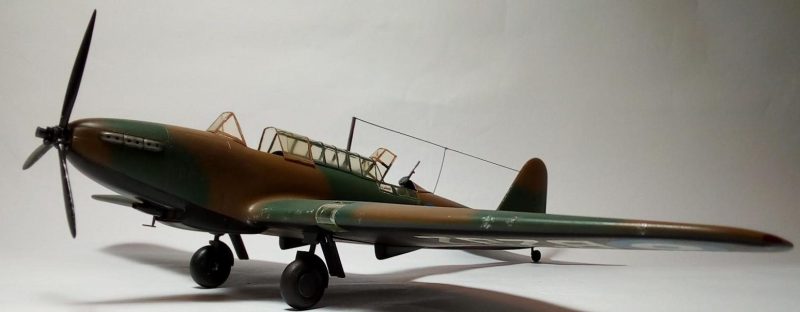
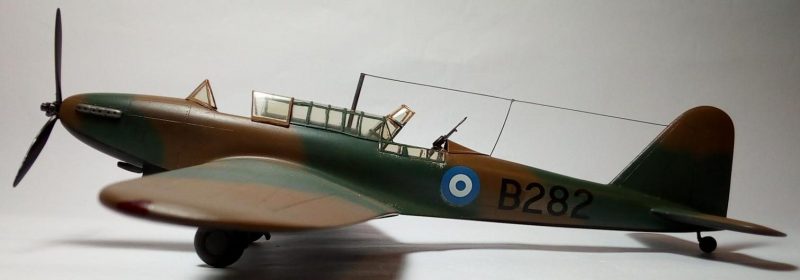

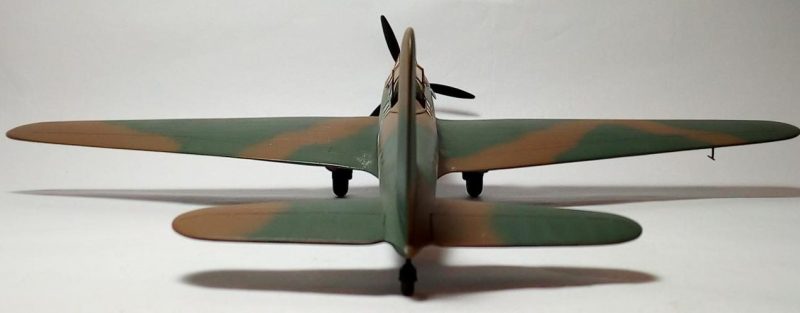


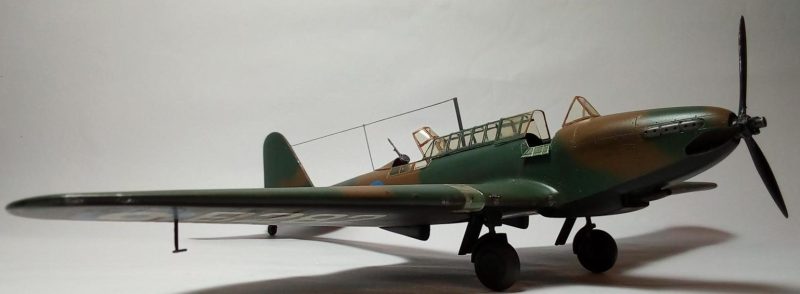
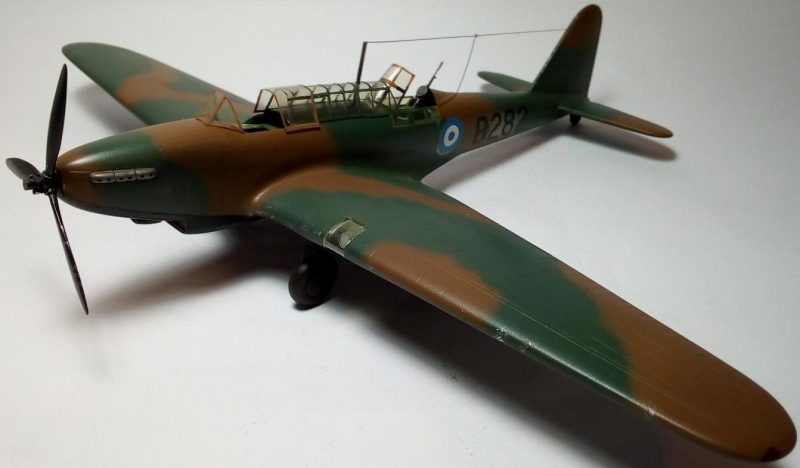
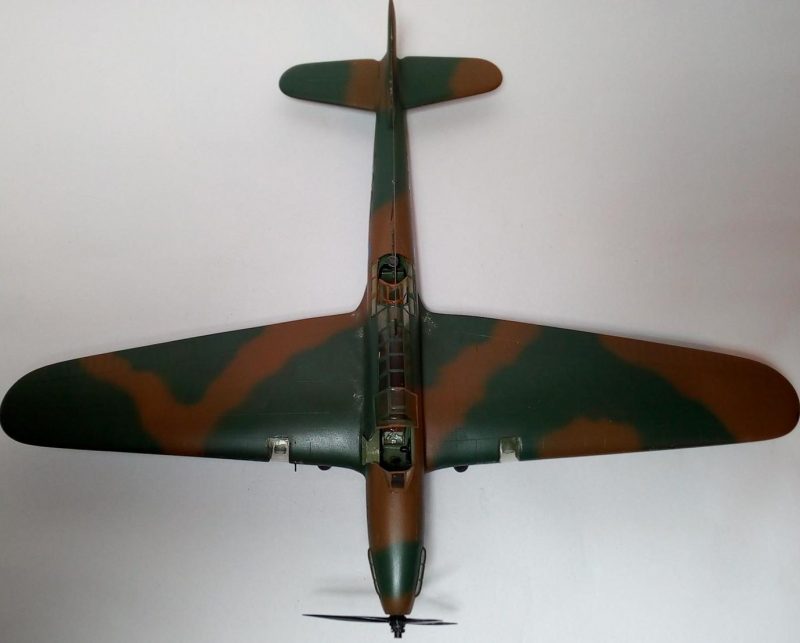
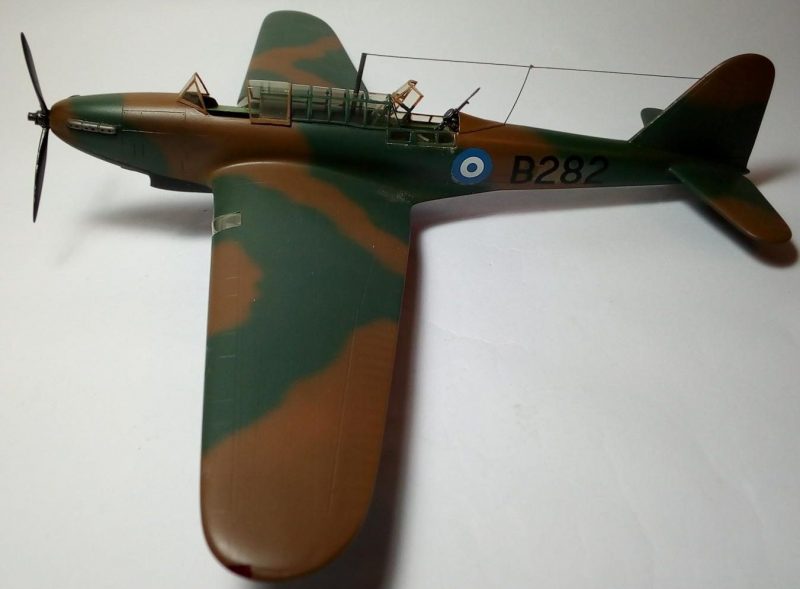
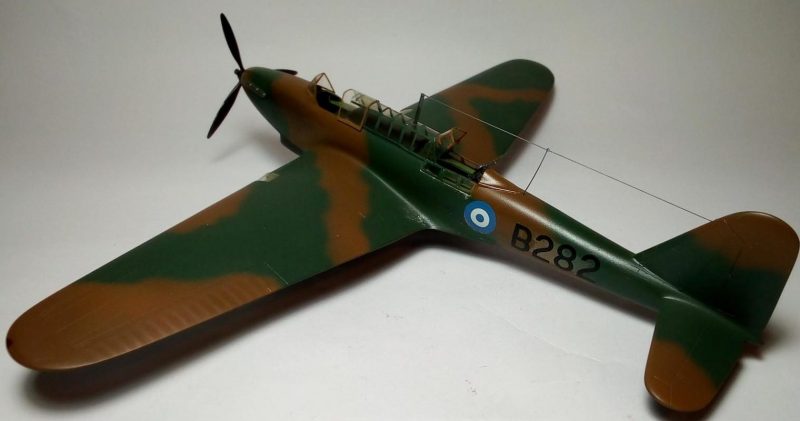
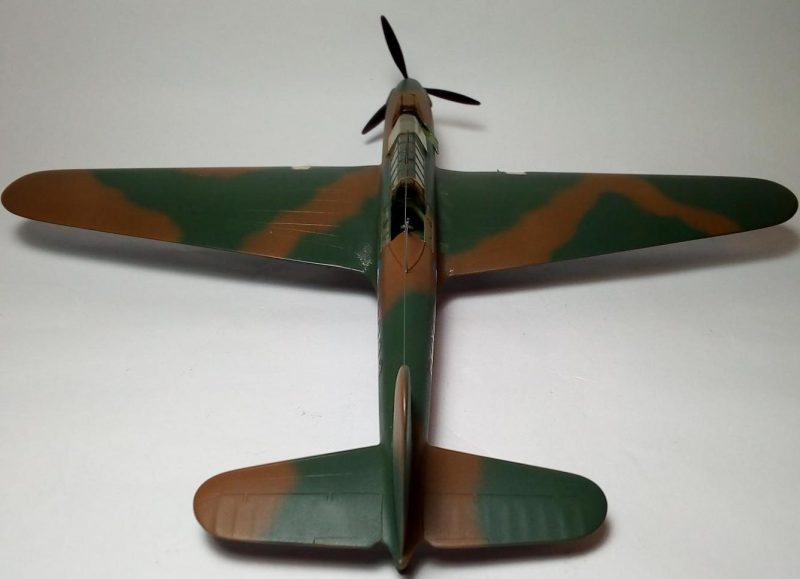
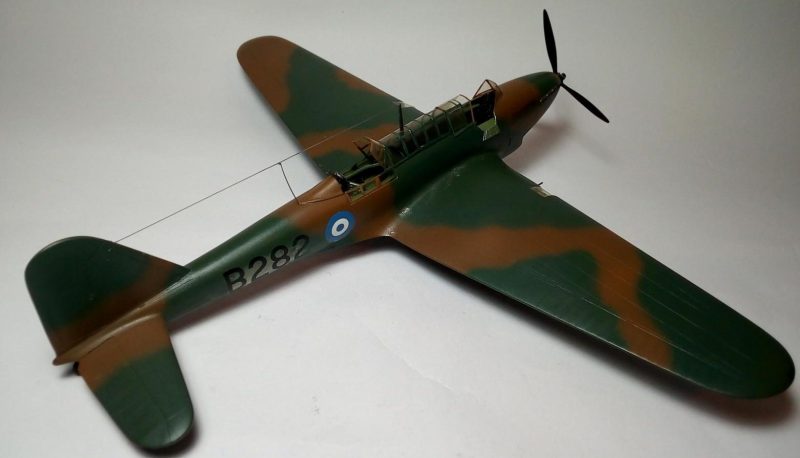
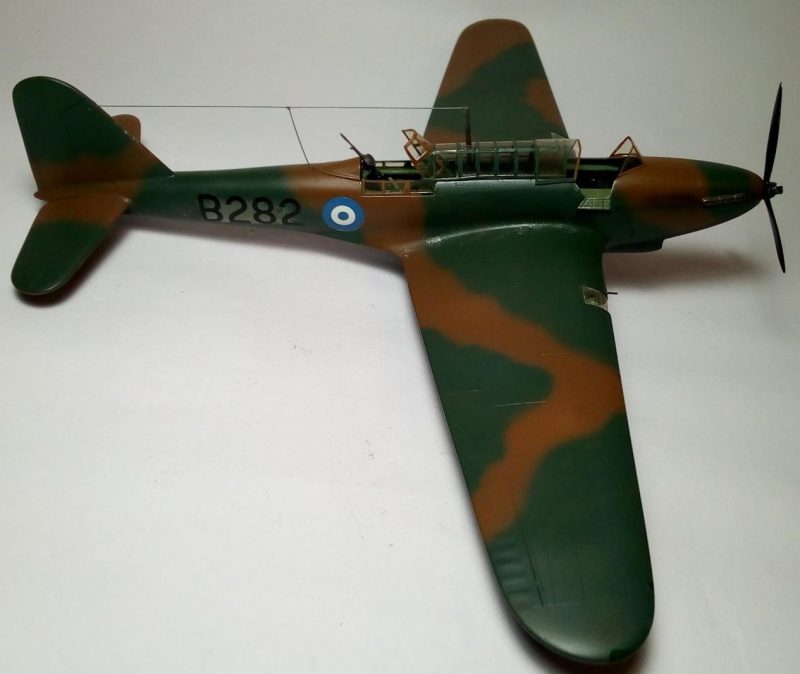
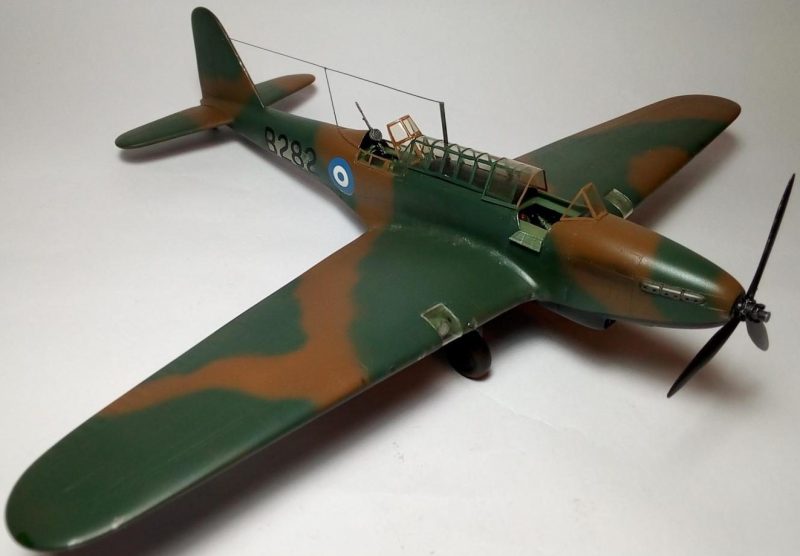
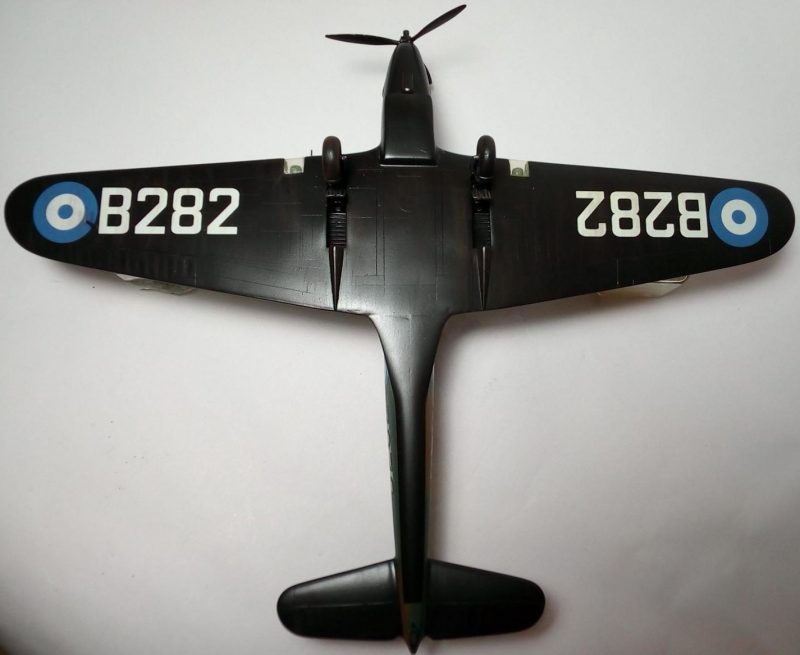
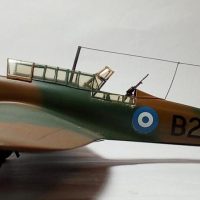
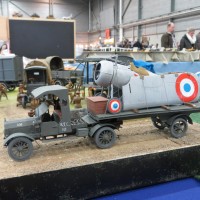
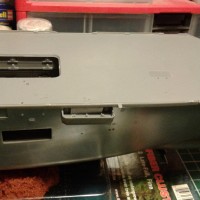
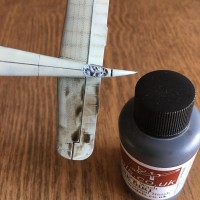
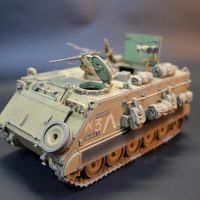
Great job on a difficult kit. Really well done on the vacformed can of peas.
Gotta be over 20 years old mine has been sitting on the bottom of the pile at least that long. 🙂
Thanks Bill @billkoppos!
I would love to see yours built, too!
That turned out very nice Spiros. Well done
Thanks George @blackadder57!
Spiros, @fiveten
I have only built one Classic Airframes kit, and it was the "Cloth Wing" Hurricane MkI. It wasn't too bad of a kit to build, but I have read some very bad stories about how this one builds up... Knowing what I have read, and knowing that your model was also built quite some time ago, I commend you on your work.
It looks great, even though it's one of your older models. I know that a lot of my "older builds" don't look anywhere near as good as this one does. It's also cool to see it built wearing HAF markings... This is something you don't see every day. I learned something too when I read your article.
So it's a win in all directions, no matter how you look at it. Well done my friend ! I made sure to press the "liked" button too. Take care and Merry Christmas.
Thanks my friend Louis @lgardner!
In fact, the decals silvering stands apart (way down low) from the rest kit's (whatever) quality, that I am trying to figure out a way to improve it...we'll see...
CA kits were he typical short run kits of those days, meaning lovely subjects, but not the easiest to build. They sure were a departure form our beloved 1/48 Tamiyas, for example. But they were offering extremely appealing subjects no mainstreamer did. The resin (and PE) details and nice, thin decals (silvering here was my fault) made them very attractive to get, if not a tad on the expensive side (but, again, this was understandable). Too bad they are out of business now, as, their releases tended to get more and more refined with time. I think some of their molds might have been acquired by Special Hobby? I had also noticed that, at those times, another "limited run" company was coming stronger and stronger, offering very interesting subjects no one had tackled before, at nice, crisp moldings and extra (but not complulsory - you could use the styrene parts, should you wish) PE-resin. I remember building their 1/48 Yak-3 and was pretty amazed. Due to my still fresh re-entering to our hobby, I thought they were a mainstream company, and, in fact, they excelled in the future. Their name was Eduard...
@fiveten:
"It was not an easy kit." - Understatement of the year! I just went over to Modeling Madness and looked up the one I did. I'm still amazed it looked as good as it did - it was a battle to make the Battle.
Great work on yours. "Liked"
Thanks Tom @tcinla!
In fact, it was your great build and equally great build review (and the luck of finding a copy of the kit), that made me go build mine!
Nice job on a dog of a kit Spiros!
Thanks Dale @dtravis!
Very well done, Spiros. Looks just great. Canopy looks very sharp indeed. Thanks for sharing!
Thanks Paul @yellow10!
I love this one, Spiros. I pulled that from the stash a few weeks ago and was leaning towards building and finishing it in the Greek option colors. I should finally build it. Nice work.
By all means, please do, John @j-healy!
Lookingn forward to this!
Thanks for liking mine!
Nicely done, Spiros! A great looking color scheme.
Thanks Robert @roofrat!
A lovely camo indeed! And I love the lack of fin and top wing insignia.
Although it was not easy, you really put down a very fine looking Battle, Spiros @fiveten
Painting and subtle weathering gave this build a great finish.
Thanks my friend John @johnb!
I hope I will find a suitable means on improving the silvering. It is quite obvious at the pics...
The thing is that a protective/final coating has been applied...we'll see...
Wow, that's certainly unusual, Spiros, and a very interesting post. Great job on completing what seems to be a "difficult" kit. Definitely liked.
Thanks George @chinesgeorge!
I admit I like less than usually buillt subjects, ditto the Hellenic scheme!
I could not resist!
Spiros, I try to learn something new every day. Today I learned a little Greek history and found out that you can master a hard kit. Thank you for sharing and surviving more food for thought.
Two thumbs up.
Thanks Stephen @Stephen-W-Towle!
Really glad that you found that little piece of history interesting.
Thanks for sharing your fine work on a difficult kit, as well as a bit more WWII history that I am not familiar with.
Thanks Robert @robgenev665!
Glad you liked it, as well as the small historical support.
Seeing one of these beasts finished and well done is always a good thing.
"Knowing is half the Battle, never built one" (like me.)
Thanks Dan @dbdlee!
I am trying to figure out a more or less small scale decals de-silvering process. I believe a (relatively painless, if possible) removing of silvering will add up to the model looks.
It is really great and impressive to finally see a built Fairey Battle. Great job, Spiros! You have not only mastered this difficult kit, but made a real eye-catcher out of it!
Thanks Roland @rosachsenhofer!
Hi, Spiros...
Smart work... not a 'look-at-me' colour scheme, or eye-catching markings, just a rather elegant and pleasantly understated finish. Very good spray painting on the colour scheme, and as for silvering... if you still have access to the original paint shades, a steady hand, a very small paint brush and a pair of magnifying spectacles, you could apply a couple of thin coats of paint around and in between the codes, 'painting out' the silvering and once dry, carefully revarnish. You may even be able to revarnish the immediate area around the codes, rather than the whole model. It can be a scary skill to acquire if you haven't already... but patience and plenty of time should help... ;-).
Thanks Paul @paulh!
Your remedial suggestion is very appealing and this is what I wii attempt to do. I used Humbrols 29 and 30 for the dark earth and dark green and I still have these shades. Only "shade worrying" is that the ones I have are from a newer batch, 10 years later...hope they will more or less match the Battle ones.
Thanks a lot for the suggestion, upon results I will take and post some pics!
No problem, Spiros... I look forward to seeing the rejuvinated Battle... well, ready for battle, so to speak... ;-).
Great job on this bird, Spiros. Really like the job done on the rear gunner's compartment. With the bottom being painted black, was that done for identification or did the Hellenic air force use them strictly at night?
Thanks Doug @eydugstr! From the research I did, it looks like the Battles were delivered with this camo. I would assume, though, that the big undeside roundels and letters were done for ID purposes. The Battle was used during the day, too, but, as reported, proved to be an easy prey.
Hmmm, i have not any words. Beautiful. ?
Thanks Josef @joeross!
I was keeping looking at your amazing Special Hobby Airspeed Oxford. I have the same kit! Royal Hellenic Air Force flew them in silver finish...
good luck Spiros, the biggest problem is within fuselage and clear part of cockpit?
Another one from the Spiros airplane factory !
Nice work. I look forward to seeing the Belgian Battle fully restored. Interesting plane .Part of their demise was also in faulty tactics. Like in May 1940 in attempting to destroy bridges over the Meuse. Low level intruder mission may have saved the day. Instead they came in formation from up high. Same may happen with the F-35 as there in not enough money for much Training available ! At 40K euro’s. Per flight one can see why.
I so agree with you about tactics, Bernard @bernardbedeur! The Battle was not that bad of a plane, as dictated by its "reputation".
Thanks for liking my model, my friend !
Very nice Sprios! I love it that you often take on the more rarely seen subjects. I've got to build my Battle (and Fulmar, and Wellesley, and Hampden...) soon!
Thanks Greg @gkittinger!
Those are some fine planes you mentioned above, and extremely interesting as models! Would love to see them built by you!
It’s a beautiful bird, Spiros...
maybe someday Airfix will produce one of these .
Thanks Jay @ssgt!
It would be nice to see the Battle done by Airfix.